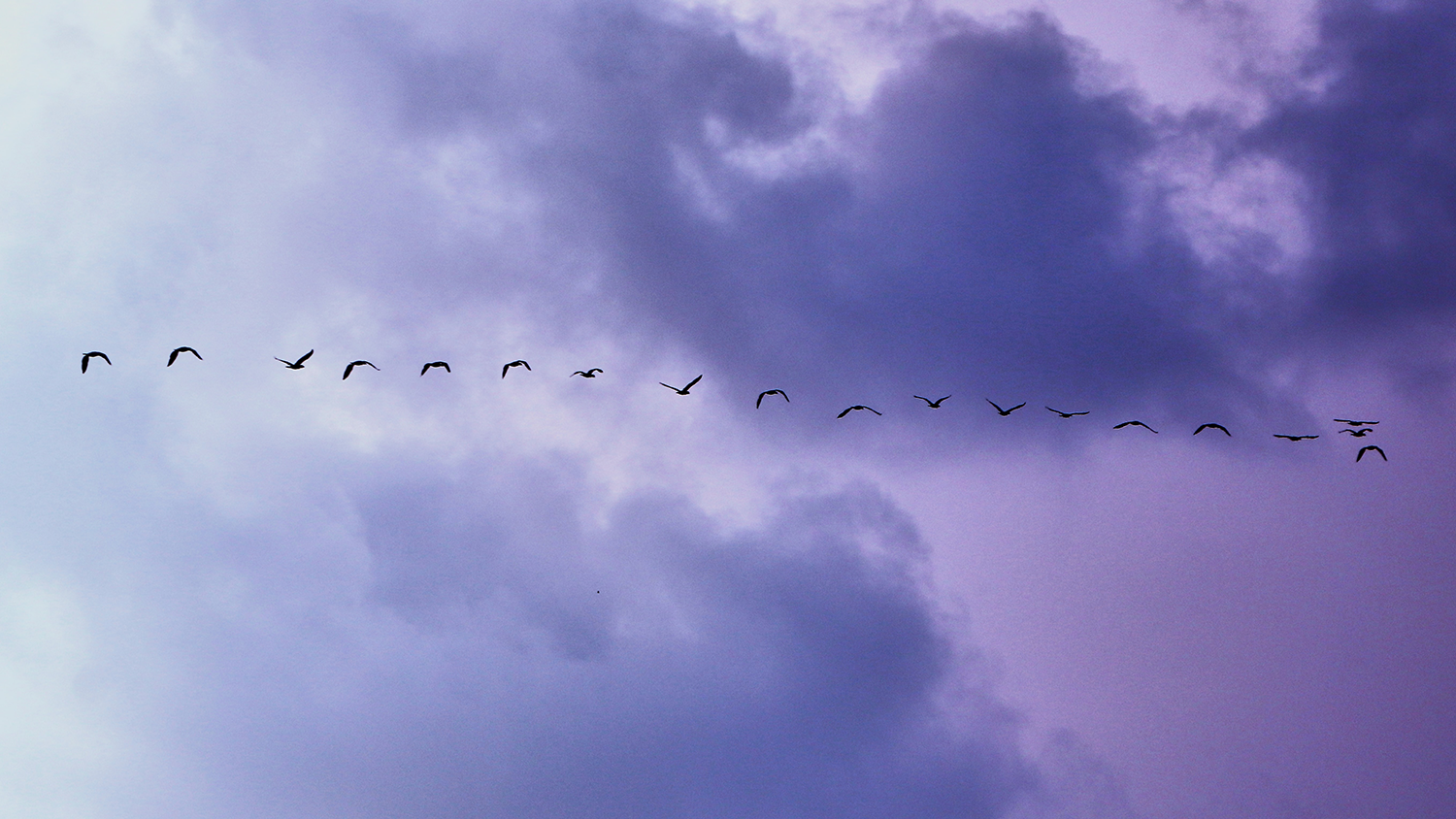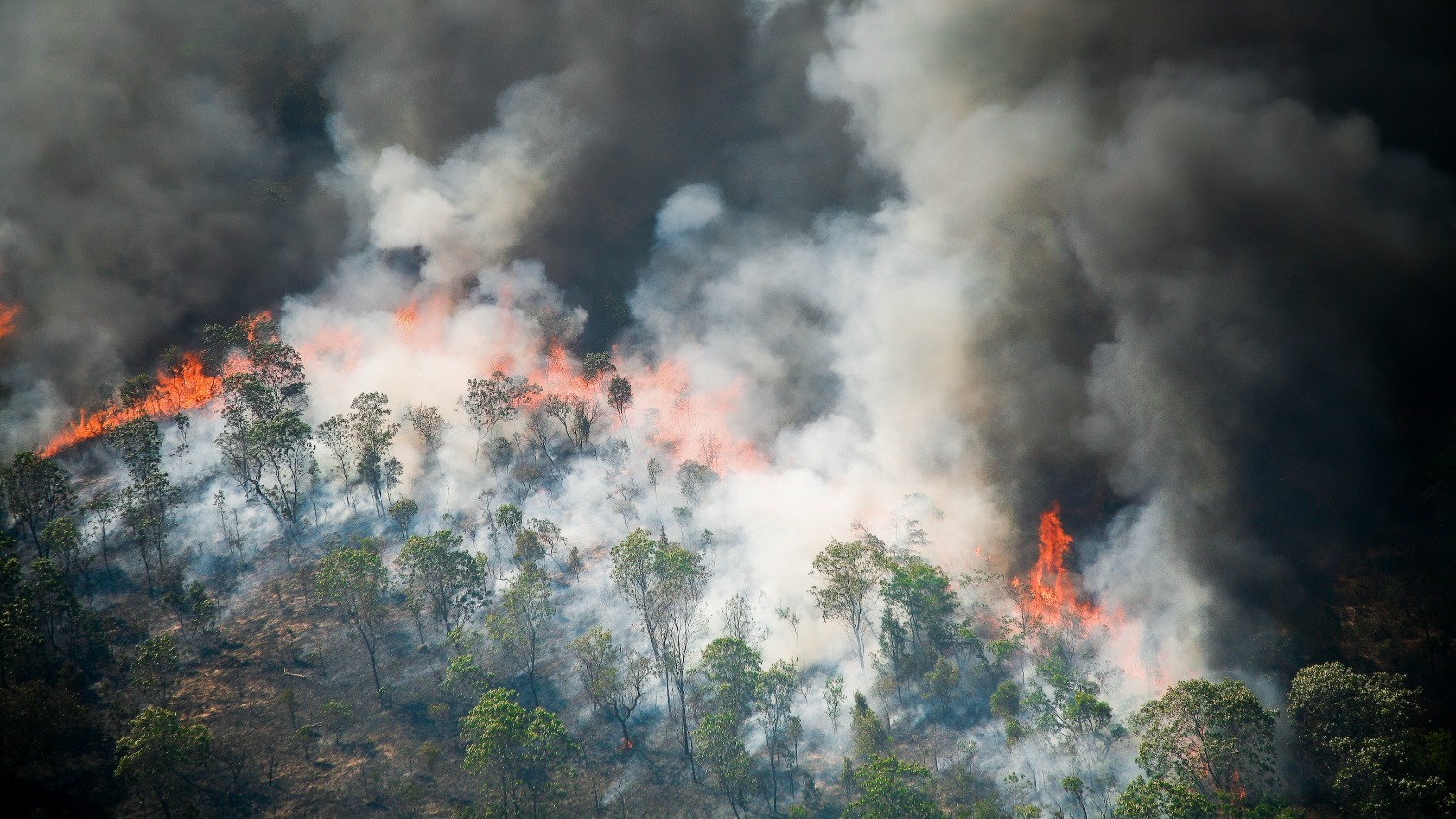Helping Migratory Birds Travel More Safely

A new study is underway to characterize risks for migratory birds as they travel north from Central and South America and from the Caribbean in the spring, and south in the fall.
Jin Bai, a graduate student at North Carolina State University, is studying factors that could increase the risk of bird collisions with windows, especially for migratory birds, since collisions are one of the leading human-related causes of bird mortality in North America.
The Abstract spoke to Bai about why birds make this journey every year, and also about his work studying risk factors for bird-window collisions. Bai is leading the study with Madhusudan Katti, associate professor of forestry and environmental resources at NC State.
The Abstract: When do birds migrate?
Bai: Most birds migrate in spring and fall. The spring migration in North Carolina starts in late March, peaks around the end of April and it starts to slow down by the end of May. The fall migration is relatively longer, from August through October. You can use BirdCast to see projections of how many birds are passing overhead in your area.
TA: Why do they migrate?
Bai: It’s an evolutionary behavior. By migrating north in the spring, they’re migrating from low-resource areas to high-resource areas for food and nesting locations.
TA: What are some of the risks for birds as they migrate?
Bai: Bird-window collisions are a major threat to birds. Researchers estimated in a study published in 2014 that as many as 988 million birds are killed by building collisions in the United States each year. A study in the Triangle area a few years ago found migratory birds may be more vulnerable to building collisions. Resident birds might be more familiar with their environment.
The fall migration has more collisions for a few reasons. One reason is that in the fall, a lot of birds have finished breeding. The juvenile birds are less experienced. Also, there is a higher number of birds migrating in the fall than in the spring because fall migration includes both adults and juveniles, whereas the spring migration includes only adults.
TA: Is there anything that shows what they tend to collide with and why?
Bai: There are a few factors in play. They migrate at night, and they use stars to navigate. When there is light pollution, it disorients them. Also, they might stay around an urbanized area, which they might have avoided without the lights, where there are a lot of windows. They see the reflected trees or sky in the windows, and they think they can fly through them; that’s why they collide. So it’s the light disproportionately attracting birds to the city, and then reflective materials that can cause collisions.
TA: What can people do to help?
Bai: People can help by turning off lights during migration periods, and by applying window films. Some of the window films have a dot pattern that can help prevent bird collisions. These films can have different patterns of dots that are all different shapes, and that can be transparent, white, black, or UV-coated. The American Bird Conservancy is a nonprofit dedicated to conserving wild birds and their habitats throughout the Americas; they have a whole database of effective products to treat windows. There are also solutions at the policy level. In some bigger cities, there have been efforts to change the codes for windows in new buildings, and some cities in North Carolina have lights-out campaigns during the migration period.
TA: What is your research in this area?
Bai: I’m leading a study to track bird collisions at three higher-ed institutions: the University of North Carolina at Chapel Hill, Meredith College and NC State. The primary goal is to identify high-risk buildings, and to advocate solutions for those buildings. The other side is to contribute to the science of bird window collisions so we know how building characteristics, or other factors such as migration intensity or weather, could be related to collisions.


